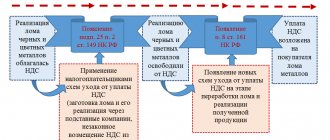Once again, the correctness of the taxpayer, who provided his employees with free lunches at the expense of the organization, was confirmed by the Moscow Arbitration Court in a ruling dated April 6, 2012 in case No. A40-65744/11-90-285.
Federal Tax Service No. 24 for Moscow filed a lawsuit against Avtotrade-AG LLC, accusing the company of unjustifiably including non-operating expenses in the audited period in the total amount of 4,252,175 rubles. During the consideration of the case by the arbitrators, it was established that the defendant company lawfully included in its income tax expenses the amounts paid for the provision of free food services to employees - since this point was enshrined in the Regulations on additional benefits, and in the employment contracts of employees it was stated that that they are covered by all the benefits established in this organization.
A contract is more valuable than money, or food is served
An integral document that will help regulate relations between employees and employers in the field of food provision is a collective labor agreement. In it, the parties have the right to prescribe the conditions for full or partial payment for meals (Part 2 of Article 41 of the Labor Code of the Russian Federation).
There are several options for organizing meals by the employer:
- compensation, additional payments, subsidies;
- concluding an agreement with a catering organization (cafe, buffet, canteen);
- ordering ready-made lunches for the office (catering);
- equipping one of the company's offices as a kitchen;
- creating your own dining room.
Each company chooses the most appropriate path for itself, after calculating the upcoming costs, tax obligations and assessing the risks. Each option has its own characteristics. For example, organizing a canteen is one of the most costly and complicated by bureaucratic procedures, which should be used by organizations with more than 200 employees. Therefore, we will talk about the most popular and least “dusty” options for presenting meals to company employees.
The daily distribution of free meals must be documented.
Currently, there is no unified form for this operation, so the organization can develop it itself and reflect it in the accounting policy, paying attention to the fact that the form contains all the mandatory details provided for in paragraph 2 of Art. 9 Federal Law dated December 6, 2011 N 402-FZ “On Accounting”.
Milk and other therapeutic and prophylactic food purchased for distribution to employees are accepted for accounting as part of inventories (debit to account 10 “Materials”) at the actual cost, equal to the amount of actual costs for its acquisition without VAT, and when issued it is written off to debit one of the accounts 20 “Main production” from the credit of account 10.
For all other employees in Art. 41 of the Labor Code of the Russian Federation establishes that a collective agreement may provide for the employer’s obligation to partially or fully pay for employees’ meals. To do this, in the section on wages, it is necessary to indicate that “the employer undertakes to provide employees with free lunches,” and in employment contracts it is necessary to provide a link to the corresponding clause of the collective agreement.
DANGEROUS COSTS OF "SIMPLIERS" (USN: INCOME - EXPENSES)
It is also necessary to prepare the following internal organizational and administrative documents:
- issue an order from the manager to organize free meals for the organization’s employees;
- keep a timesheet of working hours, allowing you to determine monthly the number of actually working employees who received free food, broken down by departments of the organization (excluding employees on vacation, business trips, sick leave, etc.);
- daily menu approved by an authorized person (for example, HR department). The last two documents may not be published if the contractor provides a report at the end of the month indicating the number of employees and the menu (list of products).
Accounting for employee meals depends on the method of providing such meals, they can be:
- ordering catering services from third-party organizations with delivery of lunches to the customer’s office (catering services);
- organizing meals for employees in the canteen (cafe) on the territory of the catering organization;
- creating your own canteen where employees are provided with free lunches;
- organizing a buffet;
- payment of monetary compensation to employees for food.
When ordering catering services from third parties, the following entries are made in the organization’s accounting records:
| Debit 60 "Settlements with suppliers and contractors" | Credit 51 "Current accounts" | Lunch costs paid |
| Account debit 70 "Settlements with personnel for wages" | Account credit 60 "Settlements with suppliers and contractors" | Lunch provided to employees |
| Debit accounts 20 (25, 26) “Main production” | Account credit 70 "Settlements with personnel for wages" | The cost of lunches is included in labor costs |
| Debit accounts 20 (25, 26) “Main production” | Credit account 69 “Calculations for social insurance and security” | Insurance premiums accrued |
| Debit account 68 "Calculations for taxes and fees" | Account credit 70 "Settlements with personnel for wages" | Personal income tax withheld from the cost of lunches |
The second method of providing food is not much different from the first, and in both cases, an agreement for the provision of paid services is concluded between organizations. The difference lies only in the nature of the service itself; as for the accounting procedure, it is similar to accounting when ordering catering services from third-party organizations.
DO YOU NEED A TAX AUDIT? CONTACT ROSCO!
Some organizations open their own canteens (cafes) and prepare lunches themselves. When carrying out this type of activity, one should not forget about the sanitary and epidemiological requirements, which receive increased attention from the inspection authorities. This applies to the entire cycle of providing public catering services, starting with the production of ready-made dishes and culinary products and ending with the creation of conditions for their purchase. So, for example, in a letter from Rospotrebnadzor (Letter of the Federal Service for Supervision of Consumer Rights Protection and Human Welfare dated August 22, 2007 N 0100/8417-07-32 “On strengthening state sanitary and epidemiological supervision over the circulation of food products”, GOST R 50762-95 “ Public catering. Classification of enterprises") indicates that special attention should be paid to food industry enterprises and catering establishments, as well as to increase the efficiency of State Sanitary and Epidemiological Surveillance over the production of epidemiologically significant food products, including confectionery and culinary products, meat, dairy and fish products. If violations of sanitary norms and rules are detected, administrative coercive measures should be applied, up to the suspension of the operation of food facilities and the transfer of materials to investigative authorities.
For violation of sanitary and epidemiological requirements for the organization of catering for the population in specially equipped places (canteens, restaurants, cafes, bars and other places), including during the preparation of food and drinks, their storage and sale to the population, an administrative fine may be imposed on citizens in the amount of one thousand to one thousand five hundred rubles; for officials - from two thousand to three thousand rubles; for persons carrying out entrepreneurial activities without forming a legal entity - from two thousand to three thousand rubles or administrative suspension of activities for a period of up to ninety days; for legal entities - from twenty thousand to thirty thousand rubles or administrative suspension of activities for a period of up to ninety days (Article 6.6 of the Code of Administrative Offenses of the Russian Federation).
If an organization has its own canteen, accounting is carried out as follows:
| Debit of account 29 “Service production and facilities” | Account credit 02 “Depreciation of fixed assets” or 10 “Materials”, 60 “Settlements with suppliers and contractors” | Reflects the costs of providing food services to employees |
| Account debit 70 "Settlements with personnel for wages" | Account credit 90 "Sales" | The transfer of canteen products to pay for labor is reflected |
| Account debit 90 “Sales”, VAT subaccount | Credit to account 68 “Calculations for taxes and fees” | VAT is charged on the cost of catering services provided based on market prices |
| Account debit 90 "Sales" | Credit to account 29 “Servicing industries and farms” | The cost of food provided by the employee is written off |
1) From hand to hand
The least troublesome way for an organization is to pay subsidies
for food, i.e. issuing money directly into the hands of employees.
An organization will be able to take into account the amount of subsidies for food as part of expenses that reduce taxable profit only if it is provided for in the labor (collective) agreement with employees (clause 25 of Article 270 of the Tax Code of the Russian Federation). If this is not specified, the payment amounts will be calculated from net profit.
Tea and coffee tax
An employer should not charge personal income tax on the cost of water, coffee, tea, sugar, and sweets purchased for the company’s office. If income in kind received by employees in the form of food is not personalized, then there is no subject to personal income tax. This is evidenced by the letter of the Federal Tax Service of Russia for Moscow dated August 28, 2006 No. 21-11/ [email protected]
But the company will still have to calculate VAT. Free treats refer to the gratuitous transfer of goods and in accordance with paragraphs. 2 p. 1 art. 146 of the Tax Code of the Russian Federation are subject to VAT.
It is possible that the employer compensates
employee expenses for lunches. This method is convenient because employees themselves determine where to eat, and the company does not need to enter into an agreement with a catering company. The amount of compensation for lunch should be established by local regulations, and in collective and labor agreements it is necessary to include references to the fact that workers are paid compensation.
The company also has the right to provide for additional payments
for food for employees, if possible (Article 41 of the Labor Code of the Russian Federation). If additional payment for food to employees is provided for by an employment (collective) agreement, these amounts can be taken into account as part of labor costs (clause 25 of Article 255 of the Tax Code of the Russian Federation).
Methods of accounting for food expenses
The appearance in accounting of information about the cost of food costs will depend on the chosen method of organizing food.
Having your own canteen will require allocating it to a service production, where the costs for this production will be generated: Dt 29 Kt 02 (10, 25, 60, 69, 70).
If food services are provided by a third-party contractor or the employer purchases products that are subsequently transferred to employees, then an entry will arise to record the cost of meals (products) received from the supplier: Dt 10 (41) Kt 60.
The issuance of food, regardless of what category it belongs to (special food or other preferential or free food), will be carried out through the account for accounting of settlements with personnel. In this case, you will have to personally make an entry for the amount of the cost of the food received for each employee when calculating wages: Dt 70 Kt 10 (29, 41).
Expenses for which personal accounting is not organized, even if these expenses are present in the wage system, cannot be attributed to settlements with personnel, so the posting for them will be as follows: Dt 91 Kt 10 (29, 41).
Meals issued as remuneration will be taken into account in the employer's expenses by assigning the following amounts:
- to cost accounts if these expenses:
- obligatory for the employer under the provisions of the current legislation (special food) and carried out within the established standards;
- provided for by the internal regulatory document on the remuneration system;
- exceeding the norms for issuing special food;
- not provided for by the current wage system.
Read more about special food and its accounting in the material “Art. 222 of the Labor Code of the Russian Federation: questions and answers" .
Costs for food, mandatory for the employer by law or due to their inclusion in the wage system, when distributing data on food personally among employees, will be included in wage costs: Dt 20 (23, 25, 26, 29, 44) Kt 70 .
Meals that do not meet the criteria for labor costs or mandatory delivery will be reflected in the posting: Dt 91 Kt 70.
2) All inclusive
If set meals are provided by a catering organization (cafe, restaurant, canteen), the employing company must enter into an appropriate agreement with it. It must reflect the conditions for providing meals to employees of this company. An option is possible when employees come to lunch and present a pass, coupon or sign in a statement or a special journal.
As for the scheme of current accounting and control, forms of acts and other documents, the employer and the catering organization choose them independently, based on ease of use. Settlements between the parties are reflected in the general manner using account 60 “Settlements with suppliers and contractors”.
Meals for employees in their own canteen
There is nothing better and tastier than freshly prepared food. But to organize a full-fledged dining room, you need to take into account many points:
- The premises must be in a non-residential building.
- The dining room must be equipped with a sewerage system, an exhaust hood and a place for collecting food waste.
- There are special requirements for the finishing of the premises.
- It is necessary to hire qualified personnel.
- Organizing your own canteen will significantly complicate your accounting.
- You need to take into account many Sanitary Pins and prepare for regular inspections, since public catering establishments are strictly controlled.
The main disadvantage is that opening your own canteen is very expensive. Therefore, this option is suitable mainly for medium and large organizations.
However, with the right approach, the company will be able to generate additional income by providing the opportunity to use the canteen services not only to employees, but also to third-party clients. As a result, catering may even become a separate type of business.
Having your own dining room also has significant advantages:
- You can control the quality of employee diets.
- The number of sick leaves due to gastrointestinal diseases is decreasing.
- Possibility of additional income for the company.
If an employee pays for lunch himself, then he does not have any additional taxable income. The employer can take into account the costs of maintaining the canteen for tax purposes on a general basis.
If the canteen meets the parameters for the use of UTII in terms of the area of the hall (up to 150 sq. m), then until the end of 2022 it can operate on an “imputed” basis. But for this, the organization itself must have no more than 100 people. But in practice, such companies rarely open their own canteens.
3) Home delivery
Delivery of lunches to the office has become increasingly popular in recent years. This method is called catering (from the English sater - to supply provisions) - a catering service for catering.
The scheme for accounting and control of funds must be specified in the contract. If the document states that the employer company only pays for catering services, these transactions can be reflected in the same way as expenses for set meals.
In the case when a company buys lunches and then gives them to employees for a fee and this activity is of a regular nature, income and expenses from these operations should be recorded on account 91 “Other income and expenses” or on account 90 “Sales”.
If the employer purchases lunches and gives them to employees free of charge, the dishes should be recorded in account 10 “Materials”.
Employee meals: organization and tax consequences
Employers often, taking care of their employees, organize meals at the workplace.
And for some businessmen this is a legal obligation. For employees, food from the employer is an important part of motivation. This allows you to save not only money, but also time on preparing lunch or traveling to your home or cafe. But for a businessman, feeding employees at their workplace can lead to additional tax payments.
Let's look at how to make workplace lunches not only convenient for employees, but also beneficial for the business as a whole.
4) Kitchen nearby
A fairly common option today is to convert one of the company’s offices into a kitchen, equipping it with various household appliances and furniture. In Art. 223 “Sanitary, medical and preventive services for workers” of the Labor Code of the Russian Federation provides for the employer’s obligation to improve the premises for meals during working hours.
Free food is the norm
Free meals in the organization are provided by law only for certain categories of personnel. The list of these professions, positions and industries is determined by order of the Ministry of Health and Social Development of Russia dated February 16, 2009 No. 46n.
At the same time, personal income tax and contributions for compulsory pension (social, medical) insurance are not charged (clause 3 of article 217 of the Tax Code of the Russian Federation, clause 2 of part 1 of article 9 of the Federal Law of July 24, 2009 No. 212-FZ).
The standards by which a room for eating should be equipped are established in SNiP 2.09.04-87 “Administrative and domestic buildings” (approved by Decree of the USSR State Construction Committee dated December 30, 1987 No. 313). So, according to clauses 2.48 - 2.52 of SNiP 2.09.04-87, if the number of workers is less than 30 people per shift, you can equip a room for meals (for up to 200 people - a canteen or canteen-dispensing room).
In order to justify the costs of allocating premises for a dining room, as well as the purchase of household appliances, a condition on providing employees with this premises for meals should be stated in the collective agreement or local regulations.
Based on paragraphs. 7 clause 1 art. 264 of the Tax Code of the Russian Federation, the costs of arranging dining rooms should be taken into account as other costs associated with the production and sale of goods (work, services).
If the cost of purchased furniture and equipment for equipping a kitchen exceeded 40 thousand rubles, and the service life is more than 12 months, it will have to be repaid by calculating depreciation (clause 1 of Article 256 of the Tax Code of the Russian Federation).
Employee meal plan options
For two categories of employees, according to Article 222 of the Labor Code of the Russian Federation, the employer is obliged to organize free meals at the workplace.
- Workers in hazardous conditions are supposed to be given milk or other substitute products.
- For workers in particularly hazardous conditions, the employer is obliged to organize therapeutic and preventive nutrition for them.
In this case, the cost of food for employees within the established norms reduces the base for income tax or the simplified tax system “Income minus expenses” and is not subject to personal income tax and insurance contributions. There is also no need to charge VAT on the cost of such food.
The organization of meals for other categories of employees remains at the discretion of the company management. But many HR specialists believe that this motivation option is very effective. Therefore, the employer, if he has the opportunity, should make additional expenses that will be paid off by the loyalty of employees.
The procedure for providing meals to all “ordinary” employees who do not work in harmful or dangerous conditions is not established by law. Therefore, employers themselves have the right to choose the most convenient option for them:
- Open your own canteen.
- Issue products.
- Order lunch delivery or full catering service.
- Prepare the room for eating.
- Pay employees for food expenses.
However, the employer’s desire to make the work process more comfortable for its employees often runs into legal requirements. From the point of view of regulatory authorities, a businessman, by providing meals to employees, increases their income. In this case, an additional object for taxation arises. Therefore, you need to carefully study each method and choose the most suitable one.
Personalization of data
The amounts transferred for food for employees are their income in kind and are subject to personal income tax (clause 1 of Article 210, clause 1 of clause 2 of Article 211 of the Tax Code of the Russian Federation).
When organizing meals on a buffet basis, the amount of such natural income for a specific employee cannot be determined. The Ministry of Finance of Russia recognizes that in the absence of the opportunity to personify and evaluate the economic benefit received by each employee, income subject to personal income tax does not arise (letter of the department dated April 15, 2008 No. 03-04-06-01/86, resolution of the Federal Antimonopoly Service of the Ural District dated 08/20/2009 No. Ф09-5950/09-С2).
And yet, in order to avoid claims from regulatory authorities, it is advisable to organize meals for employees in such a way that it is possible to determine the income received by each of them.
As for compensation and subsidies, these forms of payment for food are subject to personal income tax. The calculated amount of tax must be withheld directly from the employee’s income upon actual payment (Clause 4 of Article 226 of the Tax Code of the Russian Federation). In this case, the withheld tax amount cannot exceed 50% of the payment amount.
Tailed Employee
A dog, as you know, is a friend of man, but also a faithful and reliable guard. To protect their office from uninvited guests, the management of some companies makes a simple decision - to place a booth at the entrance and put a guard dog on a chain. And everything would be fine, but in order to avoid claims from regulatory authorities, pets will have to be kept according to the standards established by kennel clubs, depending on the breed of guard dogs (clause 4 of the letter of the State Tax Inspectorate for Moscow dated November 24, 1998 No. 11- 13/35186).
In accounting, the costs of maintaining dogs are taken into account in account 26 “General business expenses”. In tax accounting, it would be correct to classify such expenses as other expenses (clause 6, clause 1, article 264 of the Tax Code of the Russian Federation).
Let’s not forget to accrue insurance contributions: they are subject to taxation into extra-budgetary funds of payments in favor of employees made within the framework of labor relations, including those provided for by labor and collective agreements, local regulations (letter of the Ministry of Health and Social Development of Russia dated May 19, 2010 No. 1239 -19 and dated August 5, 2010 No. 2519-19).
Common mistakes
Error:
The accountant does not withhold personal income tax from the cost of food provided to the employee at the enterprise free of charge, at the expense of the employer.
A comment:
Free food is an employee's income in kind, related to wages. And personal income tax is withheld from wages and other payments related to wages.
Error:
A company that provides buffet meals for employees takes into account the cost of meals as part of the employee's remuneration.
A comment:
In the event that meals are organized according to a buffet system, it is impossible to determine how much lunch a particular employee spent. Accordingly, the cost of food cannot be taken into account as part of remuneration in kind.
To tax or not?
One of the conditions for deducting VAT is the use of goods, works, services to carry out transactions recognized as the object of taxation by this tax (clause 1, clause 2 of Article 171 of the Tax Code of the Russian Federation).
There is no official position on the issue of charging VAT on the provision of free food to employees. Letter No. 16-15/22410 of the Federal Tax Service of Russia for Moscow dated March 3, 2010 states that the distribution of lunches to employees free of charge, that is, free of charge, is subject to VAT. This position is confirmed by the resolution of the Federal Antimonopoly Service of the Moscow District dated April 27, 2009 No. KA-A40/3229-09-2 in case No. A40-34660/08-35-115. The court indicated that providing free lunches to employees is a service and is therefore subject to VAT.
A diametrically opposite decision was made by the Federal Antimonopoly Service of the West Siberian District dated September 15, 2008, No. F04-5056/2008 (10064-A75-25) in case No. A75-1465/2008. The court found that employee meals were paid for from the profits remaining at the disposal of the enterprise, and food services were provided by third parties at the expense of the employer. In this situation, when transferring lunches to employees, there is no sales and there is no reason to pay VAT (a similar decision was made by the Federal Antimonopoly Service of the Moscow District dated July 16, 2007, July 18, 2007 No. KA-A40/5665-07 in case No. A40-53703/06 -140-348).








